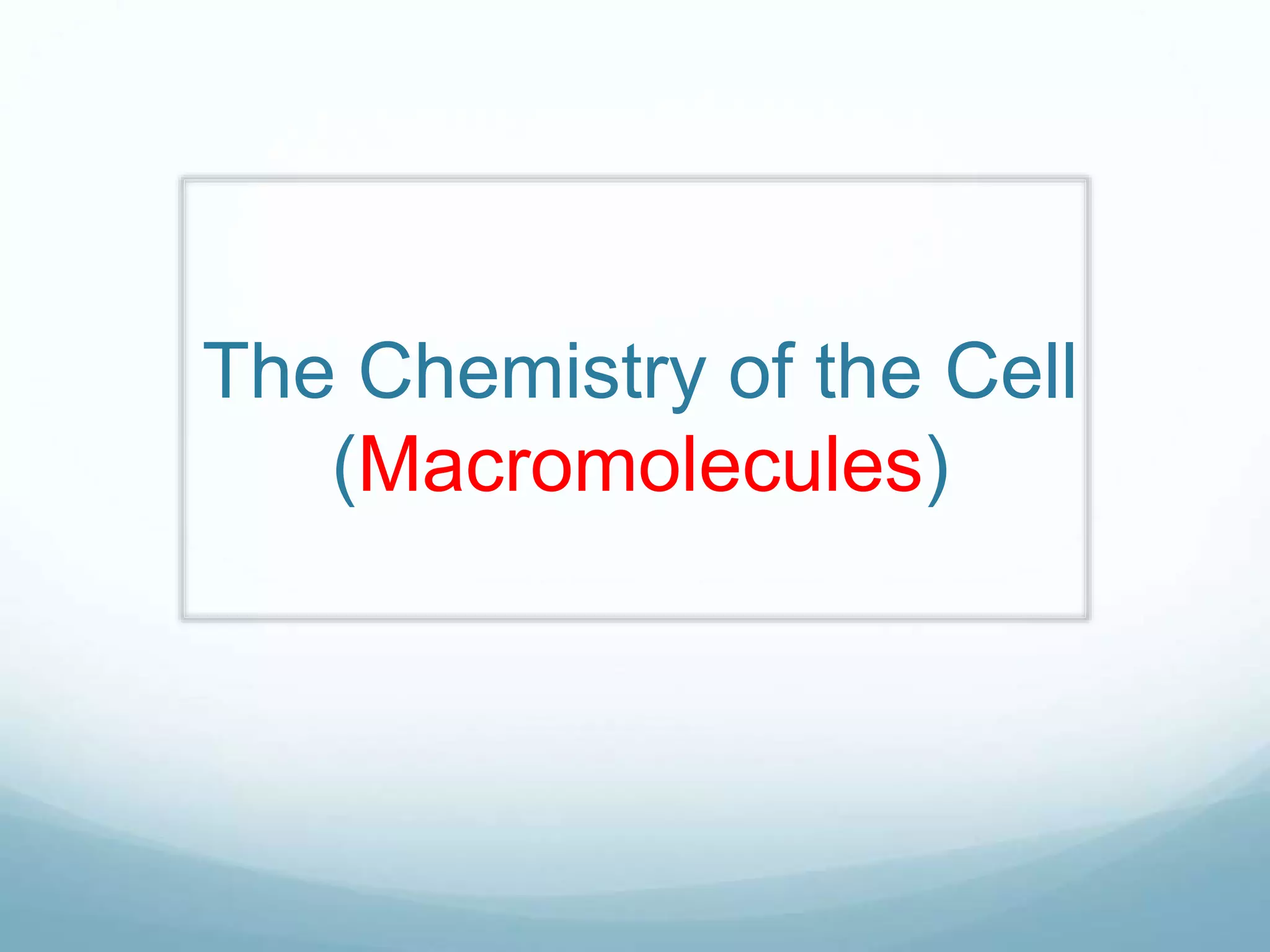Organic molecules in living systems include macromolecules made of polymers of smaller subunits. The four main types of macromolecules are lipids, proteins, carbohydrates, and nucleic acids. Lipids are made of fatty acids and glycerol and function in energy storage and cell membranes. Proteins consist of amino acid monomers and have roles as enzymes, membrane components, and tissues. Carbohydrates polymerize into sugars like starch from monosaccharides and serve as energy sources. Nucleic acids like DNA and RNA store genetic information as polymers of nucleotides. These macromolecules are broken down into their subunits during digestion and rebuilt in cells.









































